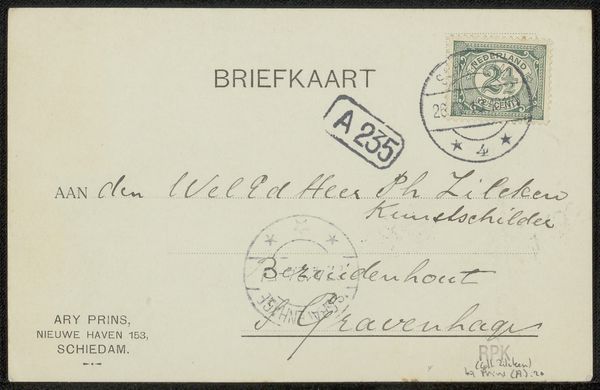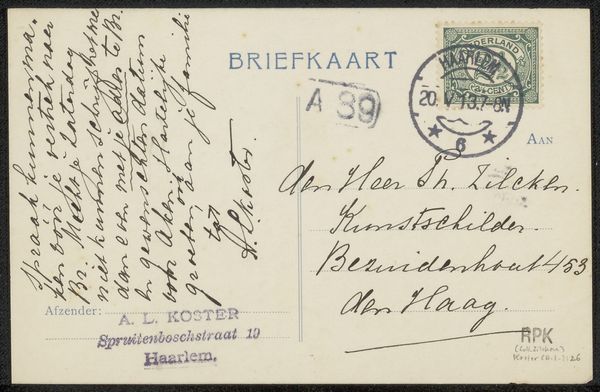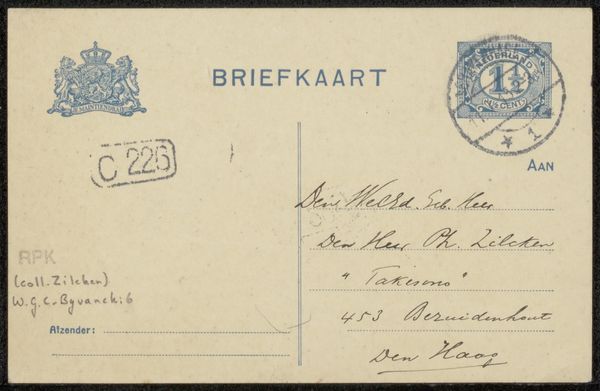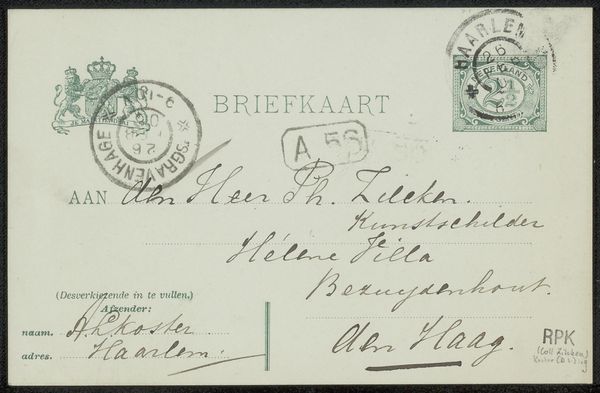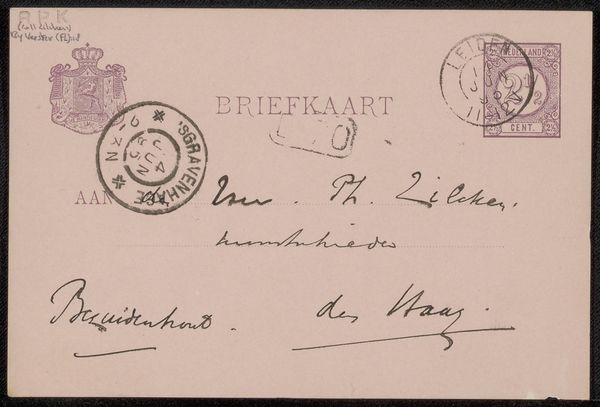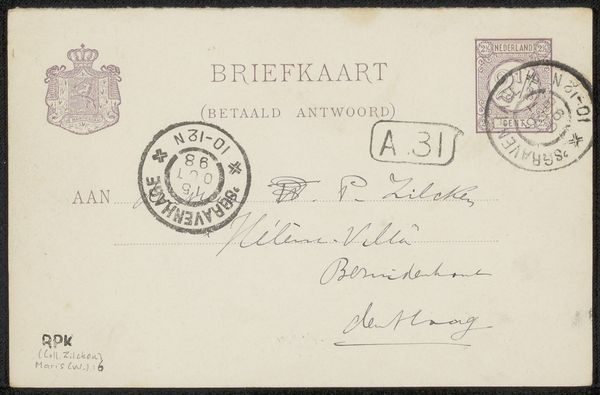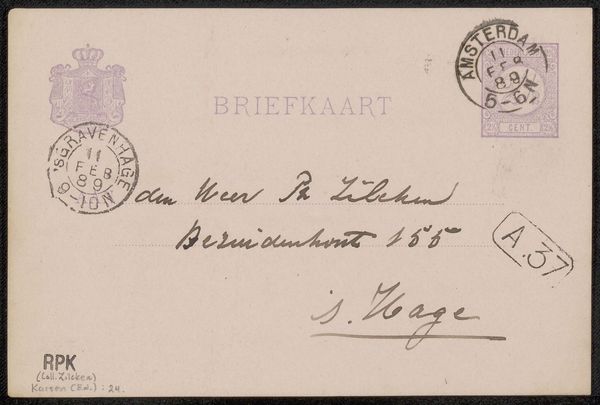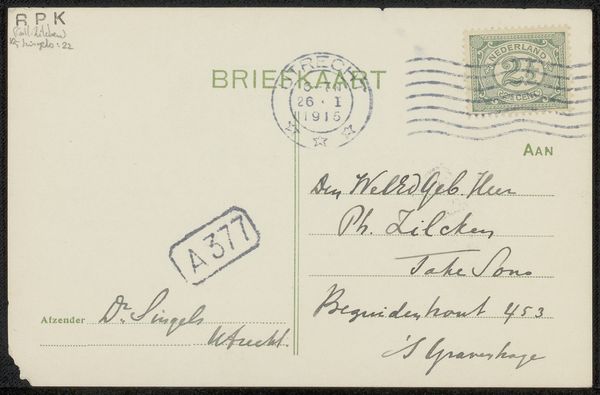
Copyright: Rijks Museum: Open Domain
Curator: Here we have a simple yet intimate object: "Briefkaart aan Philip Zilcken," or "Postcard to Philip Zilcken," crafted before 1909 by Isaac Israels. It’s rendered in ink on paper, a humble medium carrying a personal message. What strikes you initially about it? Editor: It has a charming ordinariness, a directness in its form and execution. It lacks pretension, focusing solely on conveying a brief message. The script itself possesses a certain intimacy, an artifact of everyday correspondence. Curator: Indeed. And within that everyday correspondence lies a network of artistic exchange. Philip Zilcken, the recipient, was himself an artist and art critic, and Israels, a notable figure in Dutch Post-Impressionism, was part of a vibrant artistic community. This postcard isn’t just a message, it’s a link within that network. Editor: So it serves as an artifact of social history as well, illustrating how artists maintained relationships, shared ideas, and perhaps even conducted business. The location implied by the postmark, Scheveningen, likely holds significance in this context too, indicating perhaps a summer trip. It's a record of lived artistic life. Curator: Precisely. And look at the coat of arms at the top left. These little details—the official postal insignia—offer insights into the values and conventions of the time, how even simple correspondence carried the weight of national identity and institutional authority. Editor: It's fascinating how something so utilitarian can be imbued with so much cultural significance. We tend to isolate artworks from the circumstances of their creation, but this reminds us that everything has a history. The artist, the recipient, the post office all intersected to make the humble object we see here today. Curator: And its continued existence, here in the Rijksmuseum, is a testament to the ongoing resonance of those intersections, however faint. This postcard connects us to a bygone era, when written communication, like art itself, demanded time and physical presence. Editor: Indeed. It speaks to the value of documenting everyday objects for what they reflect back about larger cultural moments. It allows the archive of ordinary moments to shine a new light on celebrated practices. Curator: Thank you for sharing such a refreshing insight.
Comments
No comments
Be the first to comment and join the conversation on the ultimate creative platform.
